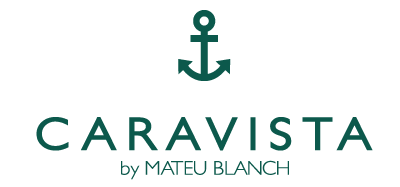Content
You asked for information on “sober houses,” particularly
their structure, government oversight in Connecticut and elsewhere, and funding. In a recent analysis of CSTL residents we looked at psychiatric severity as a predictor of alcohol and drug outcome using growth curve models (Korcha et al (2010). We found that a subgroup of about a third of the residents had significantly higher psychiatric severity than other residents and had significantly worse outcomes. Our work on identifying and describing these residents with worse outcome is continuing. Halfway houses are very similar to other sober-living residences, and it’s no surprise that people often confuse them.
- There is no time limit on how long someone can live in a sober living house.
- These people also understand what it is like to use drugs, to crave drugs, to feel distant or depressed, to lose control, and to disappoint others.
- While living on the streets, people with these and other health concerns frequently find themselves in crisis circumstances, and emergency rooms may be their sole source of healthcare.
- In most states, sober living homes are expected to be financially independent, so they typically do not accept insurance or state health coverage to cover costs.
The houses are different from freestanding SLHs, such as those at CSTL, because all residents must be involved in the outpatient program. Most residents enter the houses after residing in a short term homeless shelter located near the program. At admission, nearly all residents are eligible for some type of government assistance (e.g., general assistance or social security disability) Selecting the Most Suitable Sober House for Addiction Recovery and use those funds to pay SLH fees. Like other SLH models of recovery, residence are free to stay as long as they wish provide they comply with house rules (e.g., curfews, attendance at 12-step meetings) and fulfill their financial obligations. Also like other SLH models, each house has a house manager who is responsible for ensuring house rules and requirements are followed.
Are You Looking at Sober-Living Houses? Here Are a Few Things You Should Know
CSLT is located in Sacramento County California and consists of 16 houses with a 136 bed capacity. Phase I lasts 30 to 90 days and is designed to provide some limits and structure for new residents. Residents must agree to abide by a curfew and attend at 12-step meetings five times per week. The purpose of these requirements is to help residents successfully transition into the facility, adapt to the SLH environment, and develop a stable recovery program.
The scale includes a number of items beyond attendance at meetings, including questions about sponsorship, spirituality, and volunteer service positions at meetings. You can also look into Oxford Houses, which provide all recovering users the opportunity to develop comfortable sobriety without relapse. City Council approved Ordinance 1684 in February 2020, requiring all group homes to submit a self-certification form to the City two (2) times per year. The purpose of the self-certification is to ensure that group homes of all types are compliant with local regulations. Addiction is very complex condition, and many people take different paths in recovery.4 Therefore, it may help to consult with a specialist familiar with your unique situation when making these types of decisions. Oxford House is a democratically peer-run, self-supporting, and drug-free home.
Fee-For-Service Health Plans
Instead, they required applicants to begin their sobriety before approaching the sober house. Recovery programs filled the gap by initiating abstinence and including detoxification. The Federal Government usually funds halfway, eliminating all costs or maintaining it at a low cost to the patients. There are a few of them that offer some therapeutic treatment and support, but in most cases, it is not available. However, they offer group meetings promoting sober living and reinforcing recovery. A halfway house is a residential facility serving multiple groups of people who need rehab or want to remain sober.
The two types of recovery houses assessed in this study showed different strengths and weaknesses and served different types of individuals. Communities and addiction treatment systems should therefore carefully assess the types of recovery housing that might be most helpful to their communities. Lastly, halfway houses are often owned or sponsored by the state, while most sober-living houses are owned privately or by treatment facilities that want to provide continuing support for their patients. Connection, support, sobriety, employment, and quality of life—these are all significant outcomes for people in recovery. Recovery, being unique to each person, warrants a range of housing options for people, whether they are transitioning from homelessness, a treatment facility, or even their own home.
(now called Promoting Interoperability Program)
Despite the advantages of halfway houses, there are limitations as well (Polcin & Henderson, 2008). After some period of time, usually several months, residents are required to move out whether or not they feel ready for independent living. A second issue is financing the houses, which often includes government funding.
Although halfway houses share a lot in common with sober-living homes, there are a few key differences that set them apart. Halfway houses serve as the halfway point between an institution and independent society, with residents usually coming from either correctional or inpatient treatment facilities. A great way to find a sober living house in your area is first to explore your network. Not all sober living homes are equal, so finding a place that an acquaintance has recommended could be helpful. Most residents of these homes have recently completed an inpatient or outpatient treatment program.
